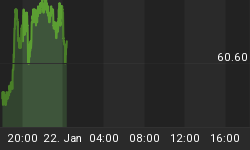The 10 year bond auction on Wednesday led to new bonds being priced at 3.04%, the highest level in four months. The implications of this are very important for all asset markets as the 3% threshold is considered to be a key level.
Investors from hedge funds to Warren Buffet to PIMCO are now talking about the Treasury market bubble. Bubbles do not pop instantly when people begin talking about an asset class, but rather require time and an initial decline in price. As price declines gain momentum, the bubble finally collapses.
Below is a chart of the 30 year Treasury bond since 1977.

As seen in the chart, the 30 year bond is now falling rapidly after having a parabolic rise at the end of a 30 year bull market. The explosive pop at the top of a bubble is what makes that asset uninvestable once the bubble ends because new investors that bought at the top quickly accumulate losses. As investors begin to sell, the asset rapidly falls in price.
Federal Reserve Purchases of Treasuries
Ben Bernanke has implied that the Federal Reserve would be willing to buy Treasury bonds should the need arise (i.e., Treasuries fall rapidly in price). He will do this by printing new US dollars. The reason that Bernanke is fearful of falling Treasury bond prices, and thus higher interest rates, is that higher interest rates would prevent an economic recovery. Although this plan could help to fund the Government's $2 trillion deficit initially, there would be huge implications to the broader fixed income markets if the Federal Reserve were to buy Treasury bonds. Nevermind the negative effect on the dollar from the newly printed money, the crowding out effect on non-government fixed income markets could be devastating. Crowding out will occur because the number of markets that the Federal Reserve can support is limited and the amount of money that is necessary to keep Treasuries from falling is staggering.
As we get closer to the day that the Federal Reserve begins to buy Treasuries, fixed income investors, who hold everything from corporate bonds to mortgages to credit card loans, should begin to sell their holdings in a panic, which in turn will send credit spreads to new highs (new lows in prices). Fixed income prices will fall to new lows because the Fed has been helping to artificially support fixed income prices with plans such as TARP/TALF, among others. As stated earlier, there are limits to the number of problems that the Federal Reserve can attempt to fix. As the Federal Reserve begins to buckle under its bailout programs, rational investors should recognize that instead of a few programs succeeding, all plans will fail together.
The take-home message is that the Federal Reserve can only do so much to instill confidence in markets. So far the Federal Reserve has been working overtime to stabilize fixed income markets. Now that long-term Treasury bonds are falling, the Federal Reserve will be forced to bail out another borrower - the US Government. As the Federal Reserve begins to buy Treasuries, the Federal Reserve will quickly become overwhelmed by its purchases, and all US fixed income prices will fall. At that point, the only option for the Federal Reserve would be to print new money at increasingly faster rates. Likely, it will be too late because the Dollar already will have resumed its decline. Only precious metals and certain foreign currencies will preserve purchasing power as a result of the Federal Reserve's troubled policies.
















